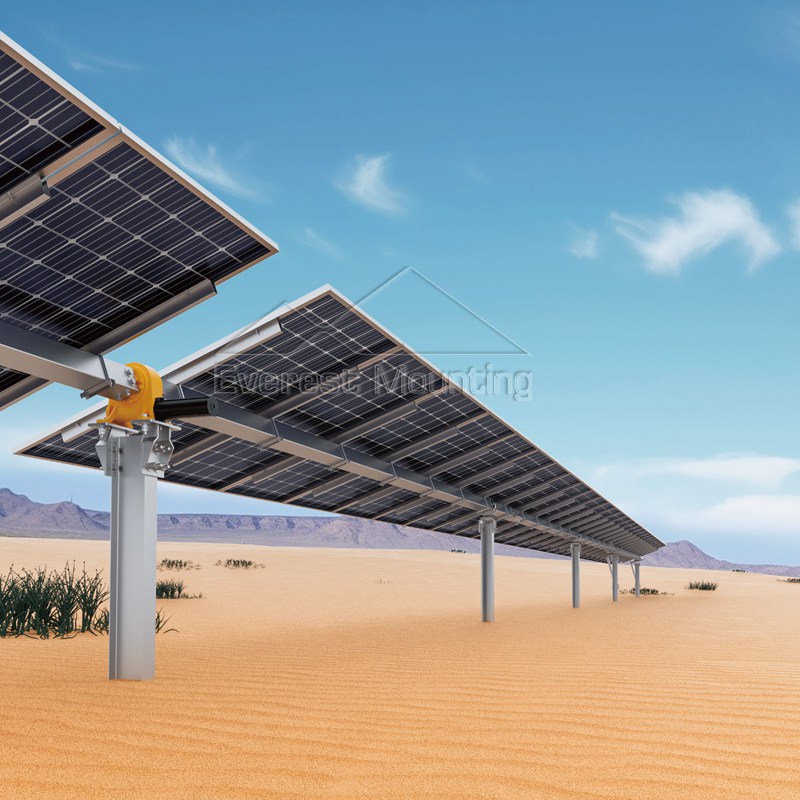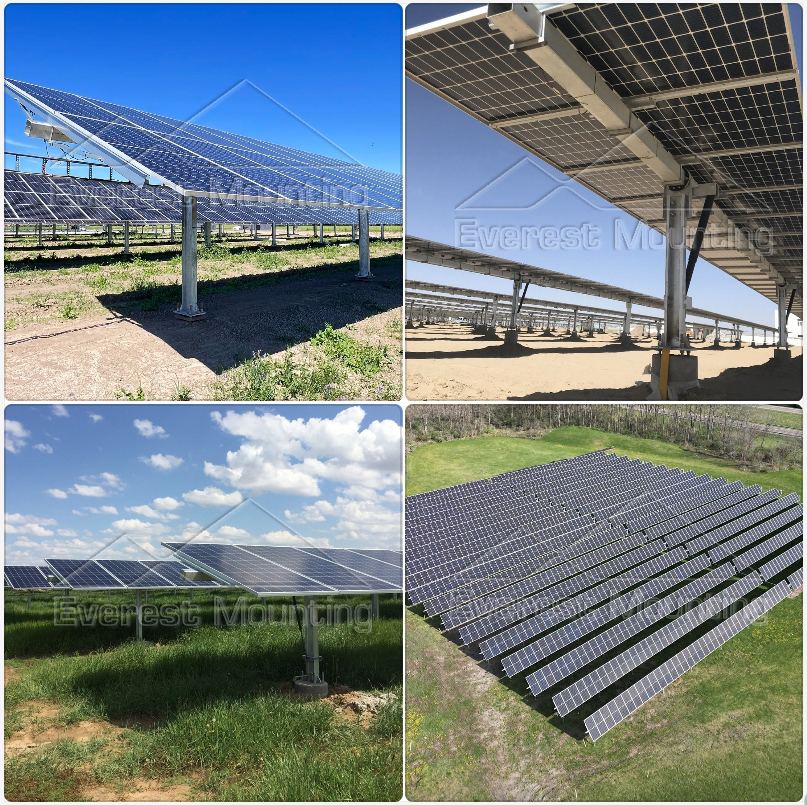Single axis solar tracking systems use a rotating axis to adjust the position of the solar panels so that they can move with the sun as it moves across the sky, receiving the amount of solar radiation and thus increasing the efficiency of power generation.
Order(MOQ) :
500KWProduct Origin :
Fujian,ChinaShipping Port :
XiamenDrive System :
Slewing DriveBrand :
Everest MountingCompared to fixed tilt-mounted solar panels, single-axis tracking systems can significantly increase the amount of solar energy captured throughout the day, ensuring that the solar panels are always at the optimal angle to maximize energy output. It is estimated that single-axis tracking systems can increase efficiency by approximately 25-30%.

Technical Specifications:
| STRUCTURE | ELECTRICAL | ||
| System type | One portrait horizontal single-axis solar tracker system | Tracking method | Astronomical algorithm+closed-loop control (AI) |
| PV-Module quantity per row | 1Px90 | Signal transmission | Wire RS485 or wireless (LoRa) |
| Tracking range | 士60°(Customized according to project) | Drive method | 24V DC Motor + Slew Drive |
| Tracking accuracy | 士1° | Power supply | AC-powered or self-powered |
| Motor quantity | 1 unit | Backtracking | Yes |
| PROTECTION | ENVIRONMENT & OTHER | ||
| Wind protection | ≧18m/s | Operating temperature | -30°c to +60°C |
| Rotate to horizontal time | 5-6mins | Slope tolerance | North-south 10%~20%, East-west no limits |
| Overload prevention | Yes | Load design standard | GB,ASCE,BS EN,AS etc |
Advantage:
▶ Overcome the Rotating Center of Gravity
▶ Effectively reduce torsional stress on the torque tube by 5-10%
▶ Reducing torsional deformation of bracket at both ends by 4-7°
▶ Decreasing the operating power of the motor
Project:

What is single axis solar tracking?
How it works: single-axis solar tracking system uses a rotating axis to adjust the position of the solar panel so that it can move with the sun as it moves across the sky. Such systems can be horizontal, vertical or tilted and usually maintain a fixed angle.
Application Scenarios: Single-axis solar tracking systems are particularly well suited to low latitude regions where the position of the sun is relatively constant.
Costs and Benefits: While there are costs associated with the initial installation and ongoing maintenance of a single-axis tracking system, these costs are usually offset by increased energy production over time .
Technical Developments: As technology advances, the design and performance analysis of single-axis solar tracking systems are constantly being optimized to improve their efficiency and reliability.
Control Systems: Single-axis tracking systems typically utilize an active tracking control strategy that calculates the sun's position in the sky and controls the orientation of the PV array to achieve optimal energy capture.